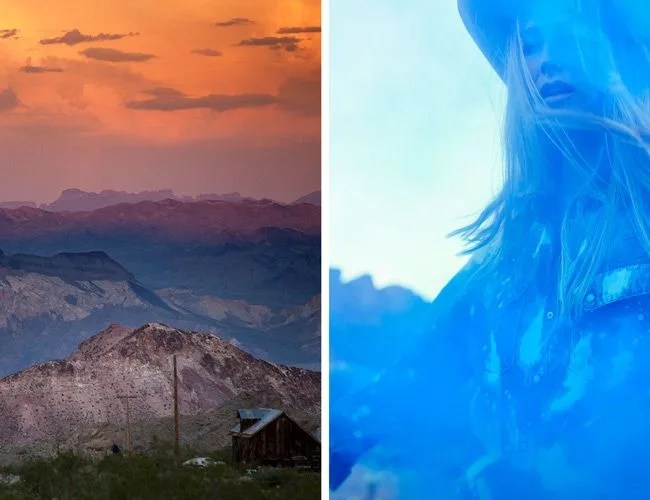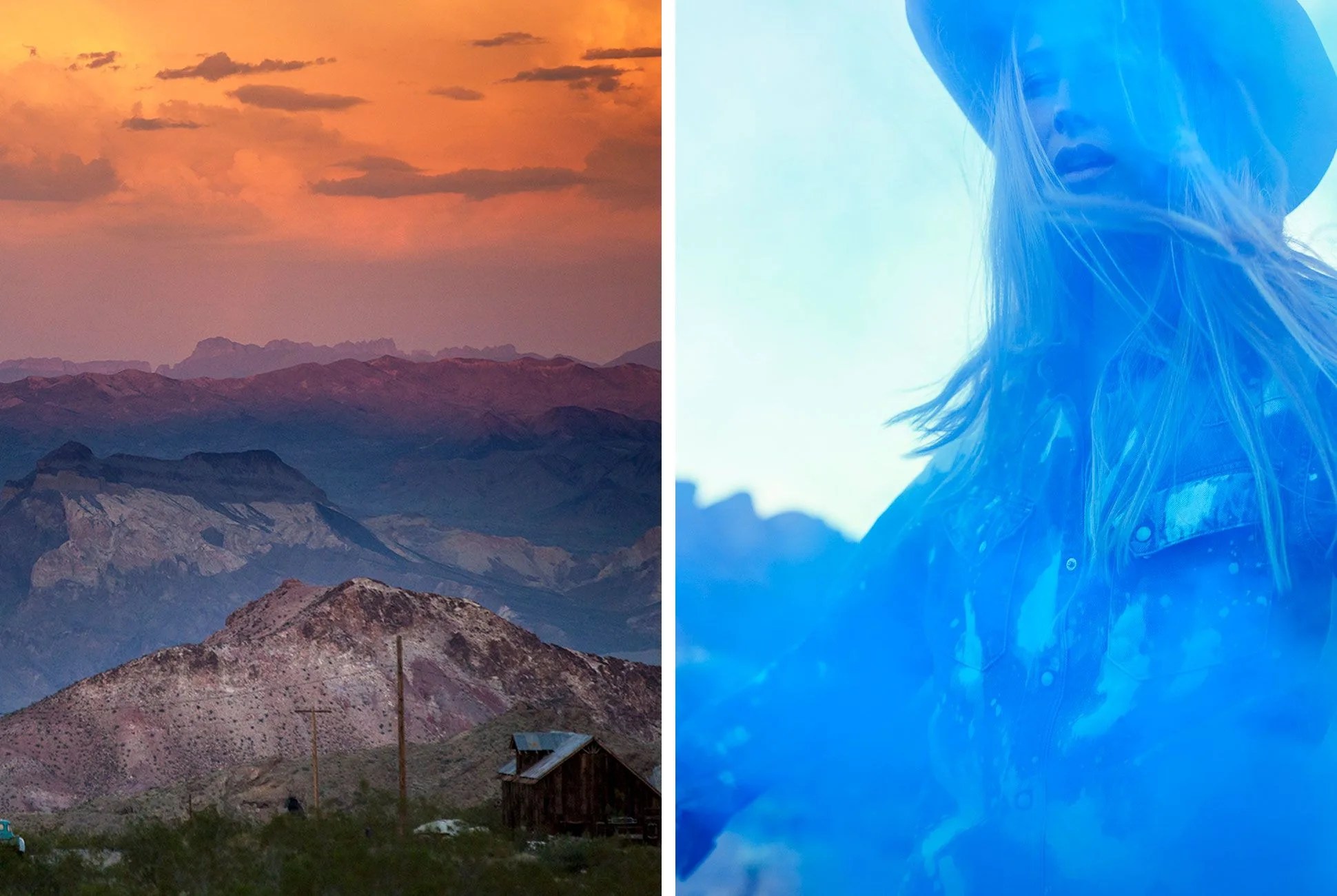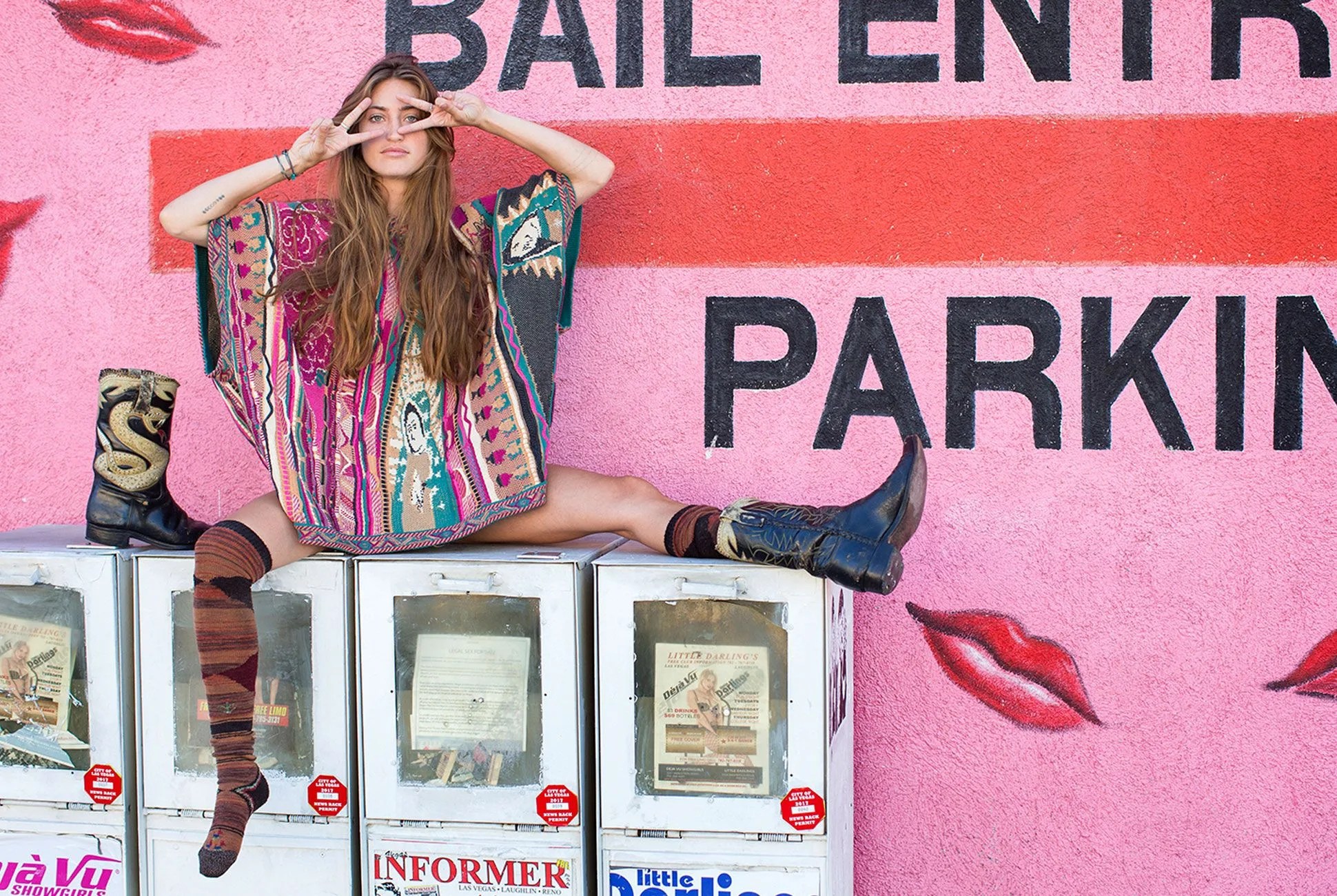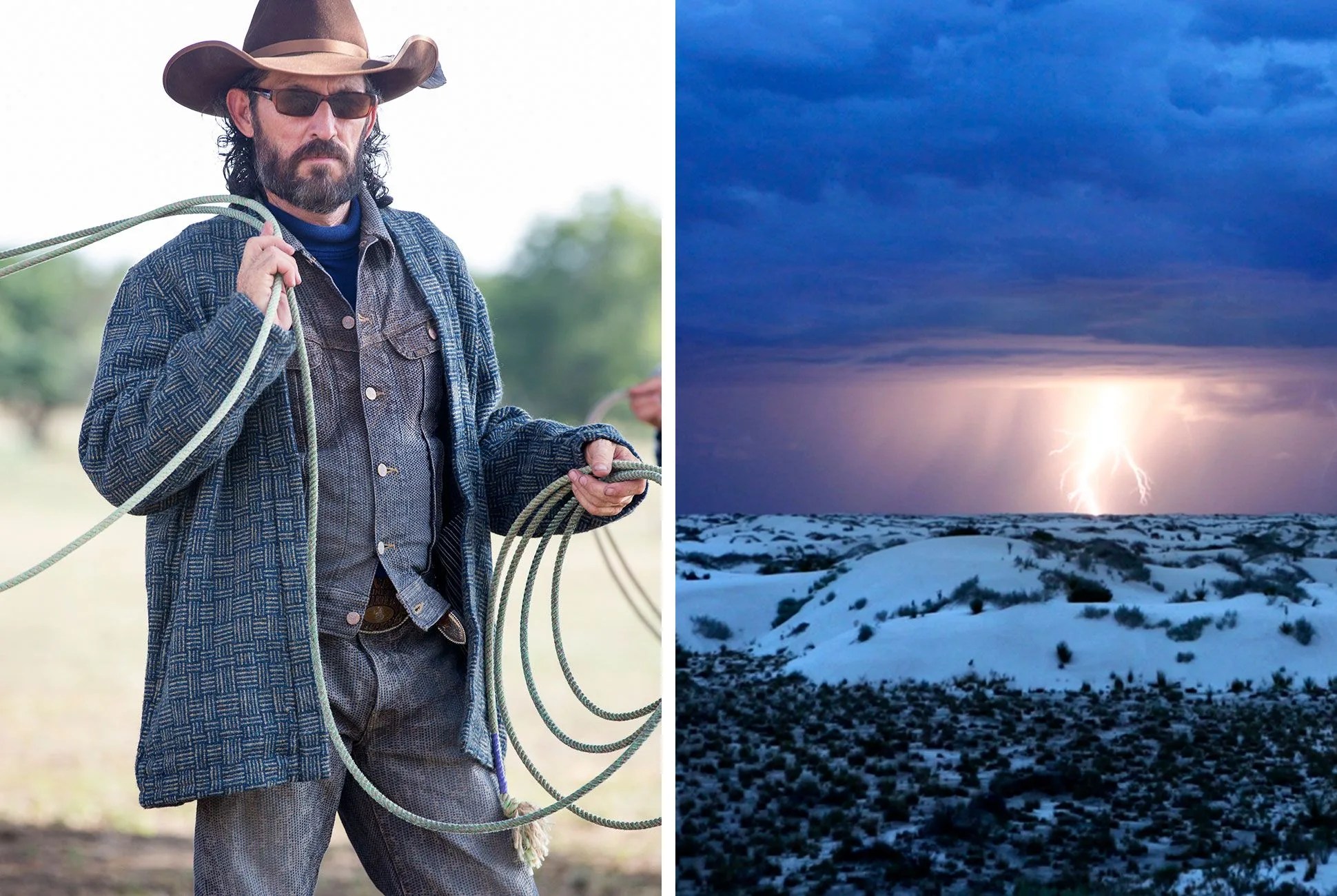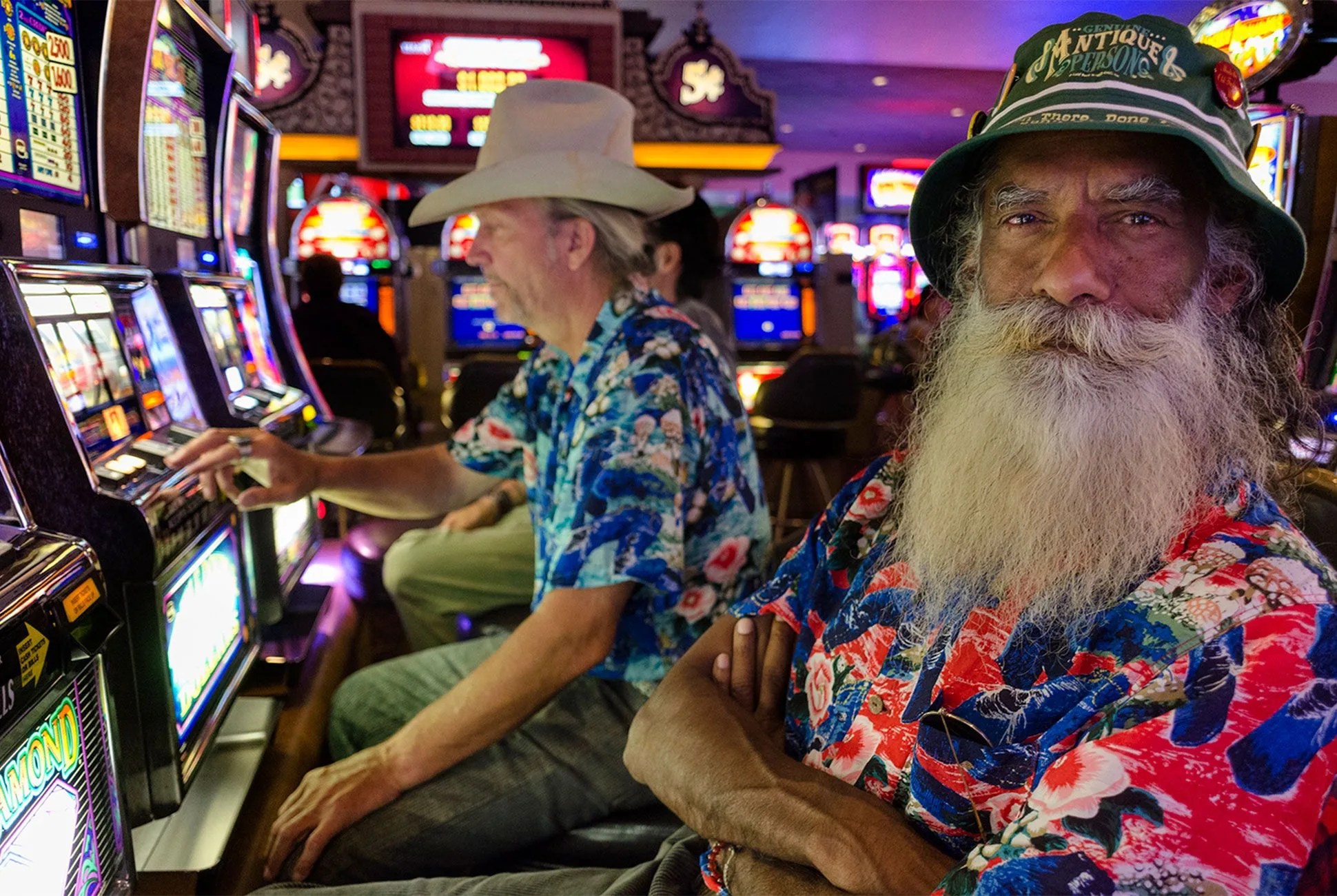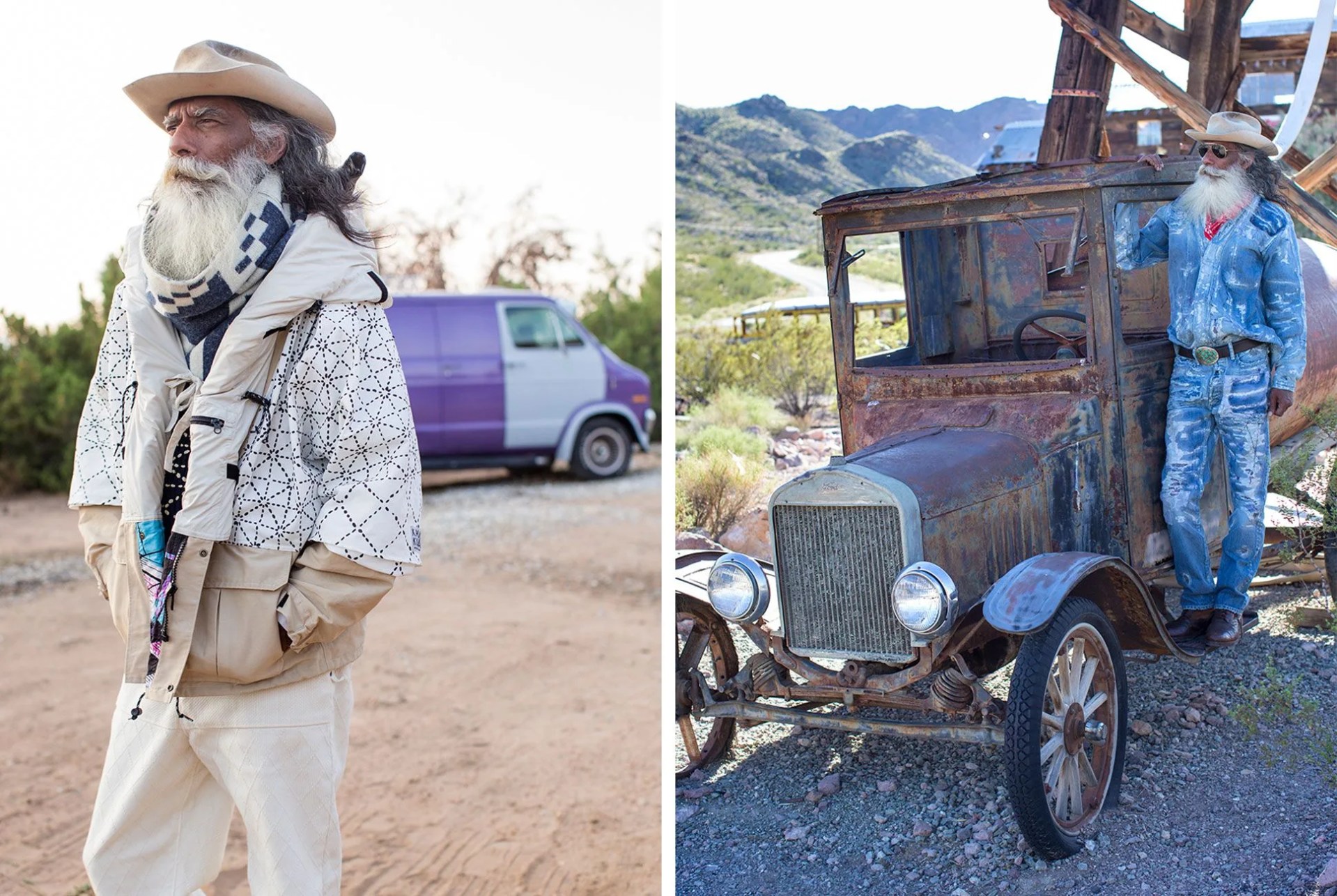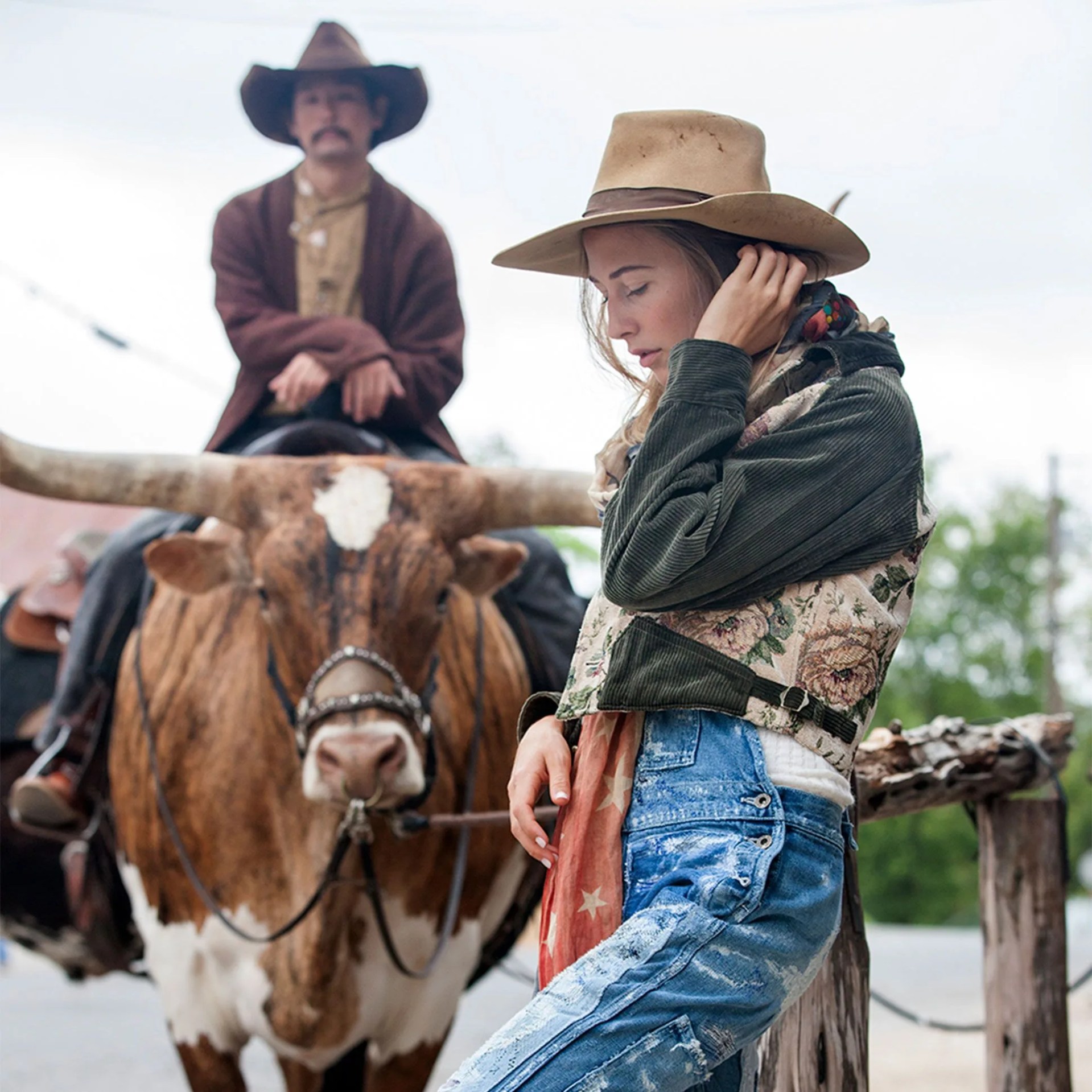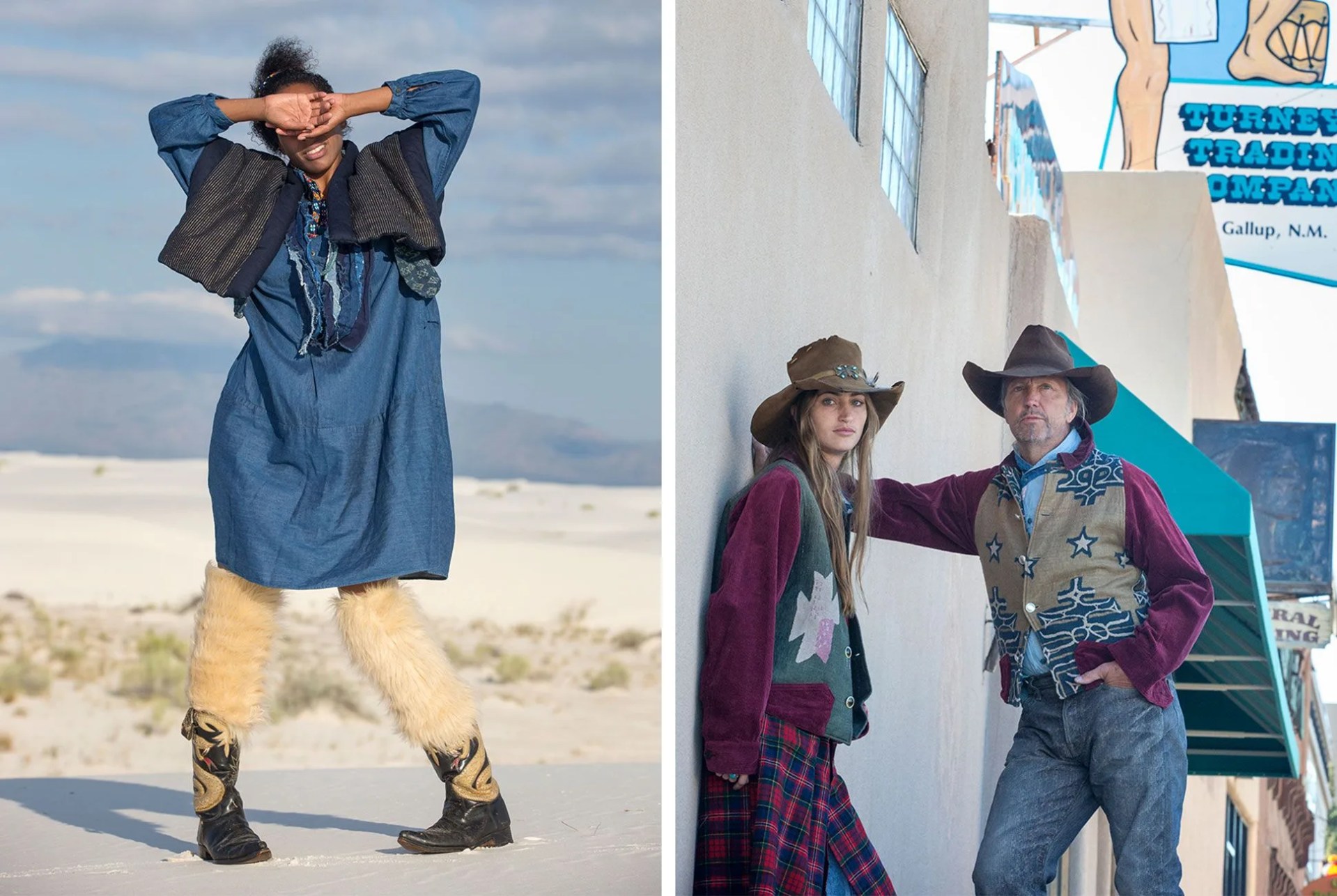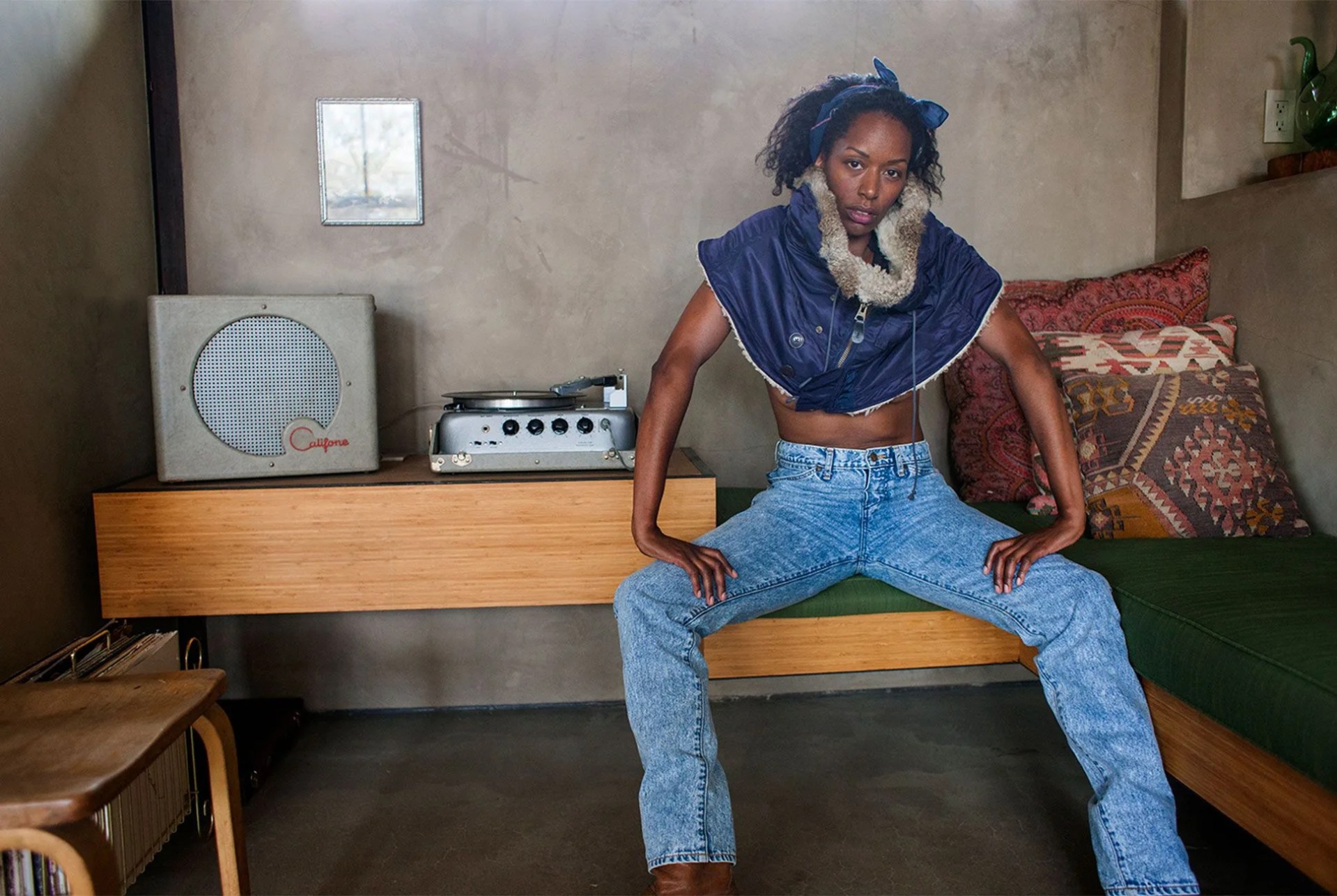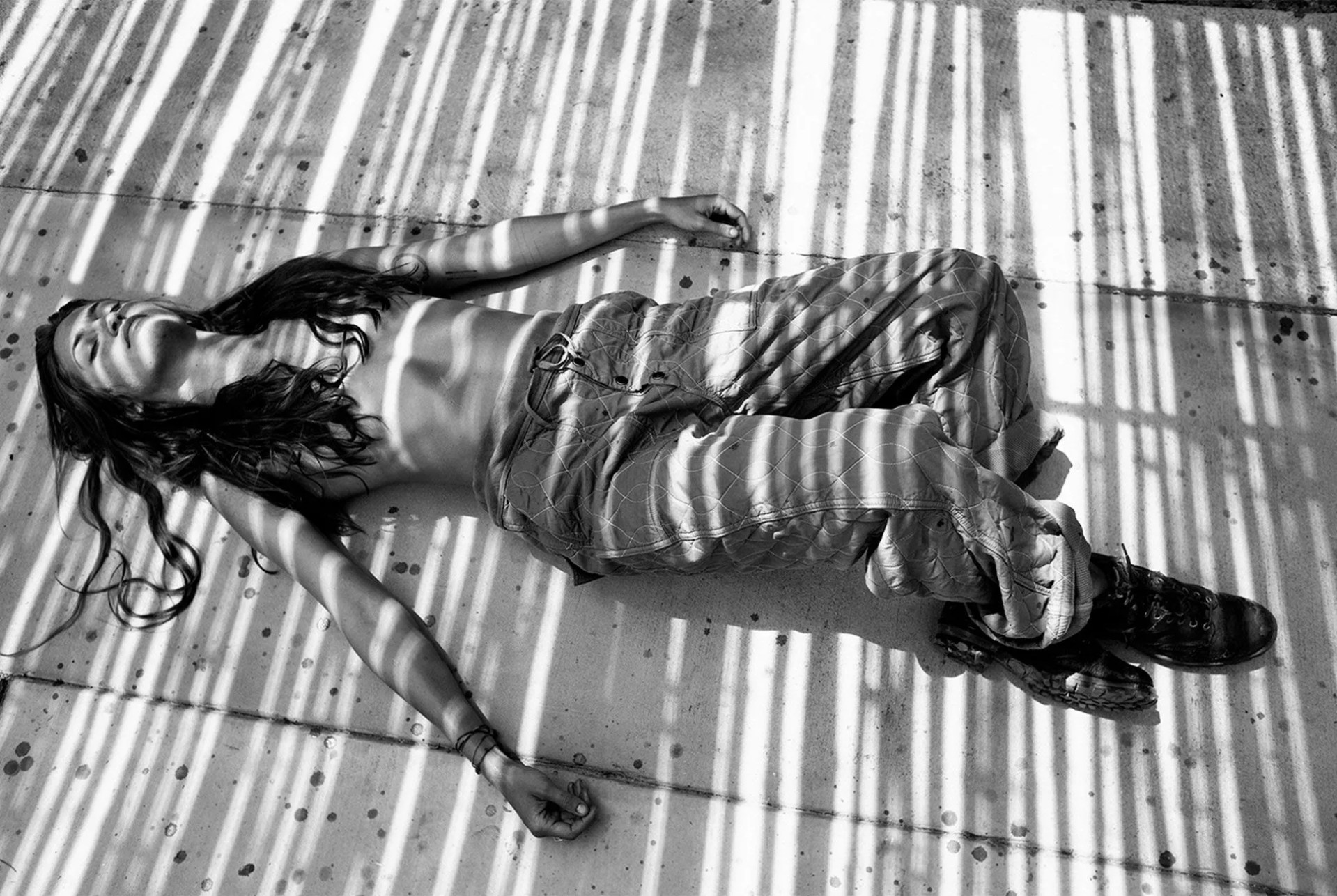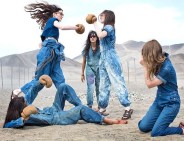5 photos
Known for experimentation and creativity, Japanese clothing brand Kapital pushes the limits with both the clothing it produces and the way it presents them. The brand’s garments draw influence from across the world and showcase a range of idiosyncratic details like sashiko-inspired stitching, mismatched buttons and intricate patchwork repairs. Needless to say, the clothing has a lot of personality. To showcase each season’s pieces, Kapital shoots a lookbook featuring unconventional models in far-flung locales; past locations have included Mongolia, Lappland and Thailand. The results, both spontaneous and beautiful, stem from a decade-long relationship between Kapital and Brooklyn-based photographer Eric Kvatek.
For Kapital’s upcoming Fall/Winter 2017 collection, Kvatek shot photographs along one of America’s most quintessential strips of pavement: Route 66. The images showcase models riding longhorns, hanging out at truck stops and relaxing on the beach. As with any road trip, there are diversions into small towns like Bandera, Texas, as well as tourist centers like Las Vegas. The American Southwest, with its rugged vistas and quirky cities, is the perfect foil for Kapital’s latest collection, which blends hippie, cowboy and ‘80s rock-climber aesthetics. As the clothing hits stores in Japan, Kvatek shares some of his favorite photos from the 2,300-mile drive with us and reflects on how this unique trip came together.
Q: With Kapital, you’ve shot across the U.S. and all over the world. What was the inspiration for this road trip shoot?
A: The designer, Kiro Hirata, has wanted to do this for several years. The logistics and additional time required made me avoid agreeing to it. But finally, his request was more firm and the timing seemed right. This collection is very American, so a Route 66 road trip photo shoot came about.
Q: What made this shoot different from others you’ve done with Kapital?
A: We have done shoots with multiple cities, and even multiple countries before, and driven plenty, but it’s always fit into a four- or five-day schedule. This shoot, we drove and shot for seven days. There were main locations built into the plan, but in theory, anywhere along the way was a location. When we saw something cool or the light was amazing, we pulled over and shot. So at least one or two people had to be dressed and ready to model at any given time.
The other unique thing was scouting and casting. I had to drive the expected route in reverse, from Los Angeles to Bandera, and figure out the local people and locations along the way. So when everybody arrived, we just started shooting and headed back west. All in all, I personally drove 6,000 miles and shot 12,000 photos.
